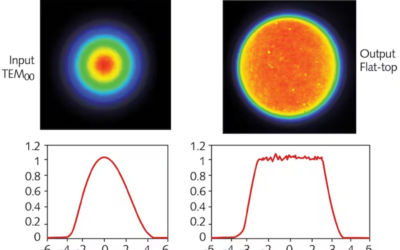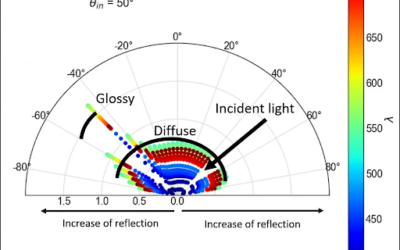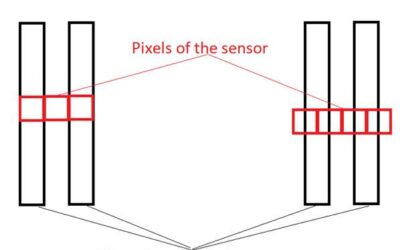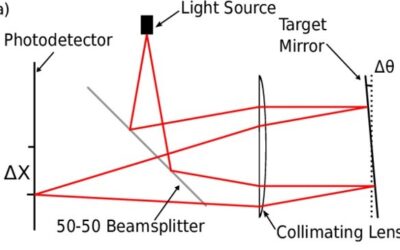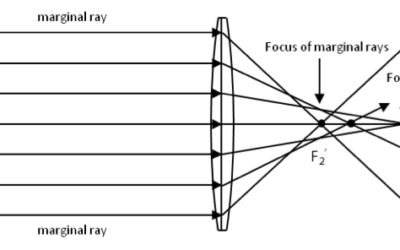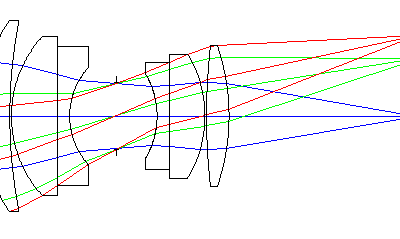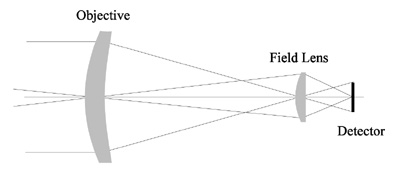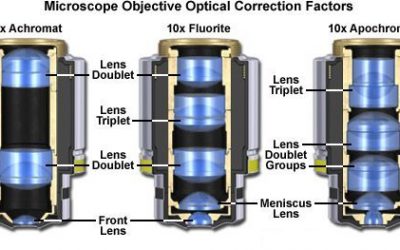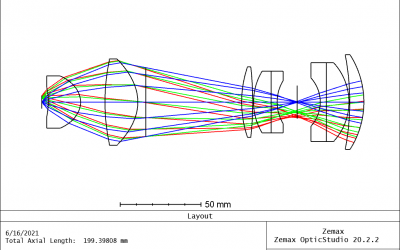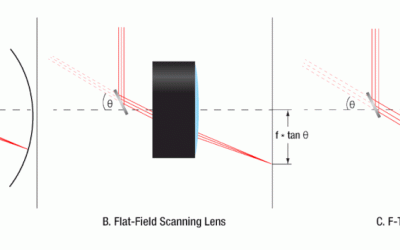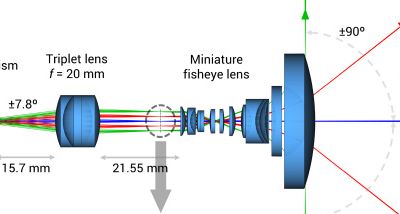A pi-Shaper, also known as the πShaper, is designed to transform Gaussian or similar intensity distributions of source laser beams into flat-top ones. This article describes benefits and trade off
lens design
Understanding K Correlation in Optical Design: Managing Stray Light and Light Scattering
by Victor Argueta | FAQ, lens design, optical engineering, optics
In this article, we will explore a critical aspect of optical design: the K correlation, and how it plays a pivotal role in managing issues such as stray light and light scattering in optical systems, and we will discuss the Bidirectional Scattering Distribution...
Designing Stereo Lens Pairs
by Victor Argueta | FAQ, lens design, optical design
Stereo lens pairs are designed to capture two slightly offset images, mimicking the way our eyes perceive the world. When these images are combined and viewed with the appropriate technique, such as stereoscopy, they create a three-dimensional effect, adding depth and...
Questions and Answers optical resolution
by Victor Argueta | FAQ, lens design, optical design, optical engineering
In the world of imaging and optics, achieving clarity and precision is paramount. Whether it's for quality control, machine vision, or barcode reading, understanding the intricacies of image resolution plays a vital role in ensuring the success of various...
Using Auto-Collimators for Optical Assemblies
by Victor Argueta | lens design, optical engineering, optics
Uses and Benefits of auto collimators for optical assemblies explained
Optical design using liquid lenses
by Victor Argueta | imaging, lens design, lens design consulting, machine vision, Optical Components, Uncategorized
Liquid lenses, are a type of optical lens that have a tunable focal length by shaping a liquid electronically. These lenses can be based on voice coil actuation, or based on electrowetting technology, which involves manipulating the surface tension of a conductive...
Understanding Paraxial Lenses
by Victor Argueta | lens design, optical design, Uncategorized
Paraxial Lenses Paraxial lenses are a simplified model used to analyze and design optical systems, particularly lenses. In the paraxial approximation, light rays passing through a lens are assumed to be close to the optical axis and at small angles with respect...
3 Rules For Plano Convex Lens Design
by Victor Argueta | lens design, OFH, optical design, optics, optics definitions
Plano convex lenses are lenses with a positive focal length and while they are simple compared to many optical systems, but there are fine details that a lens designer needs to pay attention to. This post will review 3 key rules for designing a plano convex lens
3 Keys To Quality Double Gaussian Lens Design
by Victor Argueta | FAQ, lens design, lens design consulting, Uncategorized
One of the most common lens system designs- especially in photography- is what is called a Double Gaussian lens. There are several different configurations, and close to 90 different patents have been filed from 1936 – 2010. One of the reasons this lens design configuration is so popular is that it corrects many of the major image aberrations with a relatively low number of optical elements.
3 Strategies for Field Lens Development and Design
by Victor Argueta | imaging, lens design, Uncategorized
Field lenses are a basic element in optical design, to understand their role in an optical system it’s important first to understand the definitions of Field-of-View (FOV). Generally speaking, FOV is the maximum size of an object that an optical system can create an...
Retinoscope Design
by Victor Argueta | lens design, Opthalmology, optical design, Victor Argueta
Retinoscopes are a very common optical instrument used by optometrists to examine a patient’s eye and evaluate the need of corrective lenses. They use a very interesting physical principle. Let’s first describe the optical instrument. The retinoscope is a hand held...
Understanding objective lenses
by Victor Argueta | FAQ, lens design, Optical Components, optical design, optical engineering
Introduction In previous entries, we have talked about the design of scanning microscopes, infinity corrected microscopes, confocal microscope design, and Koehler illumination systems-a common illumination system in microscopes. The most essential microscope element...
Powell Lens Design
by Victor Argueta | FAQ, lens design, machine vision, optical design
Previous posts have reviewed different techniques for beam homogenization as well as the difference between spot size and beam angle. This post will review a method for beam shaping using Powell Lenses. Powell lenses are lenses that create a straight laser line by...
Conoscopic Lens Design
by Victor Argueta | illumination, illumination lens design, lens design
A conoscopic lens is an instrument that can be used to measure the angular distribution of a light source. Its use is quite different from a lens, as in photography. An image created by a conoscopic lens resembles that of a fisheye lens. That is a...
Tessar Lens Design
by Victor Argueta | FAQ, lens design, optical design
Among the many lens design configurations, one of the most common lens optical layouts is the Tessar Lens. This layout was created by Paul Rudolph in 1902 for photographic lenses. In the golden age of film photography, the...
Projection Lens Design
by Victor Argueta | illumination lens design, lens design, optical design, Zemax
Projection systems are one of the most common consumer optical devices (probably second to photographic systems). They allow us to view images on a screen (usually) by magnifying and projecting them at distances from a few centimeters to several meters away...
Apochromatic Lens Design
by Victor Argueta | FAQ, lens design, lens design consulting, optical design, optics definitions
In an achromatic lens design, we optimize such that two wavelengths, usually red (590nm) and blue (495nm), focus on the same image plane. This is done to reduce chromatic aberration. In this article, we’ll talk about a similar design type called an Apochromatic lens...
How the Abbe Sine Condition impacts optical designs
by Victor Argueta | FAQ, lens design, optical design
When making first order optical design calculations, most engineers use parameters based on paraxial (or ideal) systems. That is, lenses in which the chief rays are very close to the optical axis. However, that’s not always the case, and as we move...
The Role of F-theta Lenses in Laser Scanning
by Victor Argueta | lens design, lens design consulting, machine vision
Introduction to f-theta Lenses In the landscape of optical systems, the introduction of f-theta lenses is an important chapter, offering a solution to the challenges posed by traditional lenses in laser scanning applications. As laser technology becomes more...
Exploring LIDAR Lens Design: Innovations and Applications in Optical Engineering
by Victor Argueta | FAQ, lens design, optical design
Introduction LIDAR, short for Light Detection and Ranging. In recent years, LIDAR has emerged as a transformative force across a multitude of industries, revolutionizing everything from autonomous vehicles to archaeology. But what exactly is LIDAR, how does it work,...
